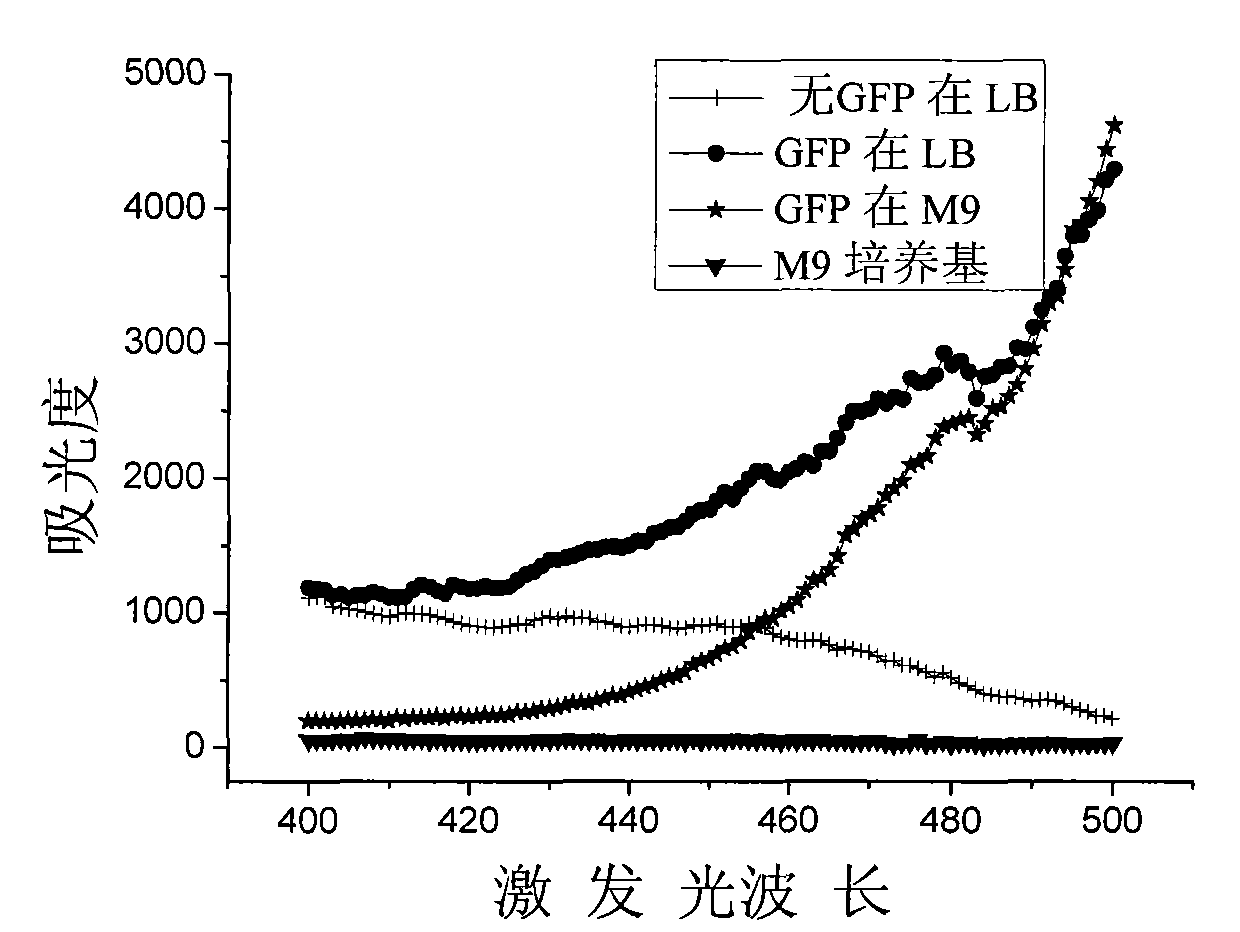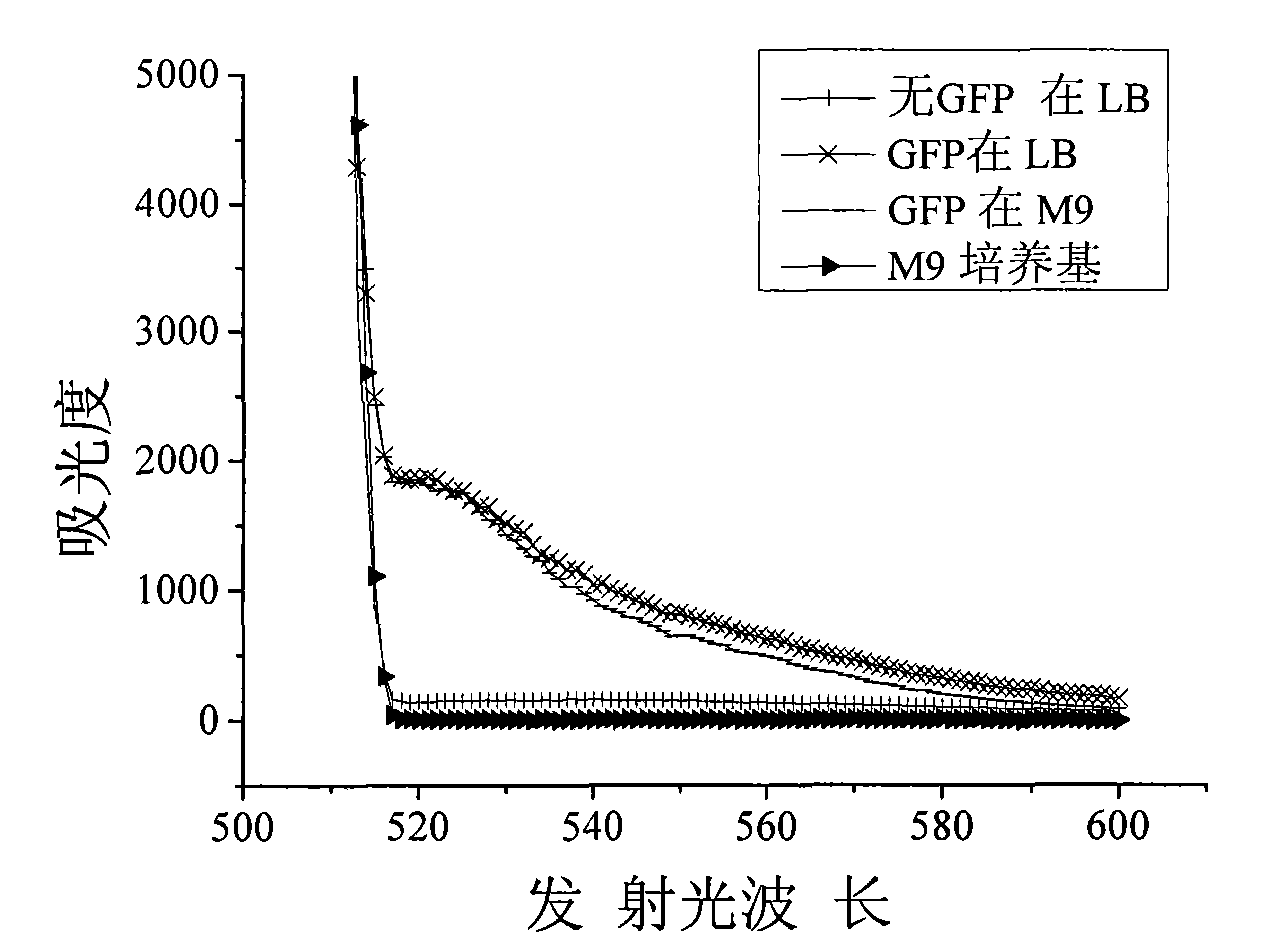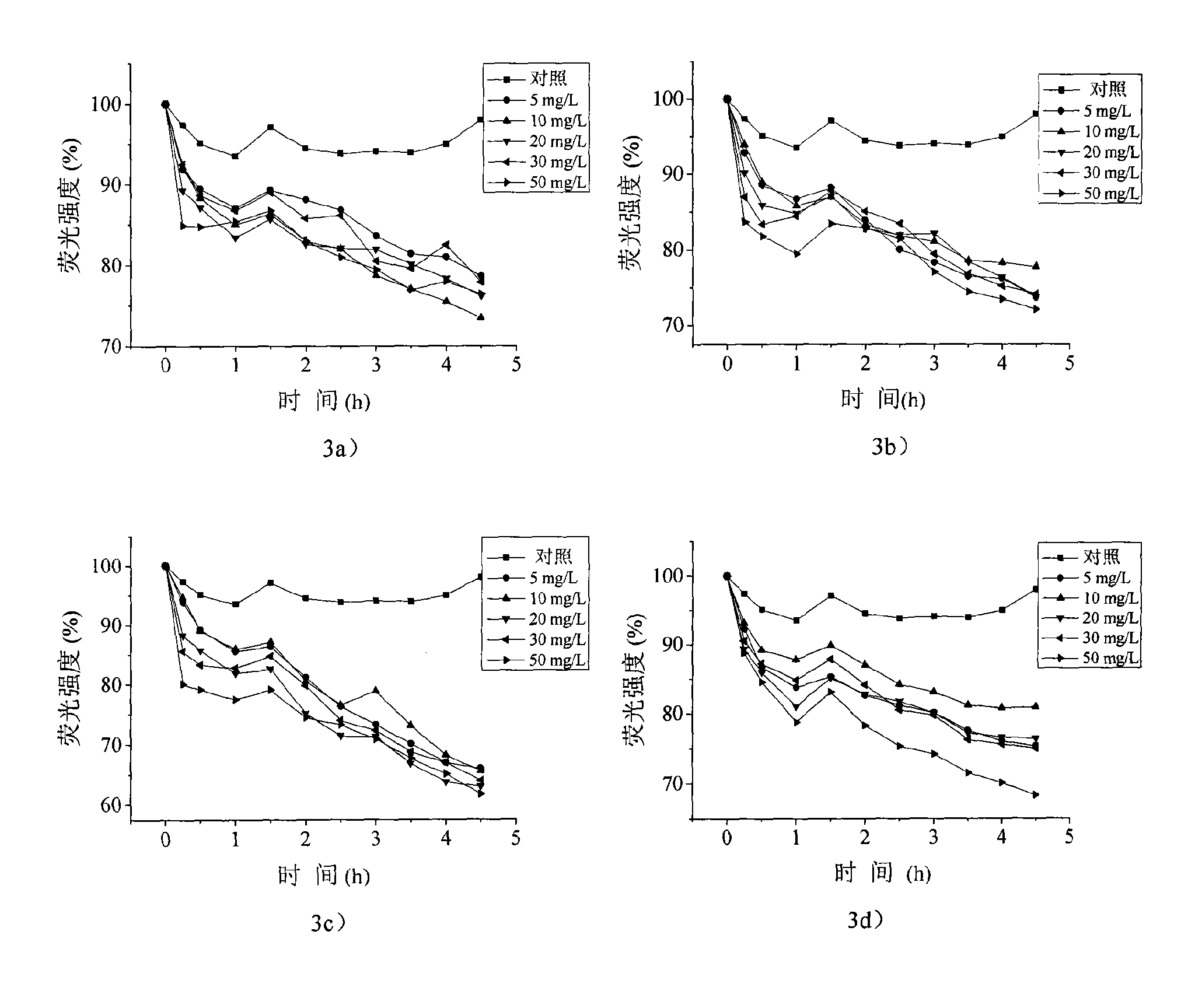Detection method of toxicity of nanomaterials
A toxic and nano-particle technology, applied in the field of environmental detection, can solve problems such as high price, inaccurate detection, and complicated operation
- Summary
- Abstract
- Description
- Claims
- Application Information
AI Technical Summary
Problems solved by technology
Method used
Image
Examples
Embodiment 1
[0033] This embodiment relates to a method for detecting the toxicity of nanomaterials, including the following steps, wherein the nanomaterials are rutile nano-titanium dioxide.
[0034] 1. Take a tube of 100 microliters of DH5a competent cells, add 1 microliter of green fluorescent protein particles, mix well, and place in an ice bath for 30 minutes;
[0035] 2. Place the tube in a 42°C water bath, heat shock for 90 seconds, and transfer to an ice bath for 2-5 minutes;
[0036] 3. Add 700-800 microliters of non-resistant SOB medium at room temperature to the tube after ice bathing, transfer to a shaker, and shake at 37°C for 1 hour;
[0037] 4. Take 450 microliters of transformed competent cells and add them to the medium resistant to kanamycin. After the medium is completely absorbed, culture overnight at 37°C;
[0038] 5. Select a single colony and identify it by colony PCR;
[0039] 6. Inoculate and incubate at 37°C for 12-16 hours; prepare a black enzyme label plate, a...
Embodiment 2
[0045] This embodiment relates to a method for detecting the toxicity of nanomaterials, including the following steps, wherein the nanomaterials are anatase titanium dioxide. In embodiment 2, the same nanoparticle toxicity detection plate as in embodiment 1 is used to carry out the following steps:
[0046] 1. Take a tube of 100 microliters of DH5a competent cells, add 1 microliter of green fluorescent protein particles, mix well, and place in an ice bath for 30 minutes;
[0047] 2. Place the tube in a 42°C water bath, heat shock for 90 seconds; transfer to an ice bath for 2-5 minutes;
[0048]3. Add 700-800 microliters of non-resistant SOB medium at room temperature to the tube after ice bathing, transfer to a shaker, and shake at 37°C for 1 hour;
[0049] 4. Take 450 microliters of transformed competent cells and add them to the kanamycin-resistant medium. After the medium is completely absorbed, culture at 37°C for 12-16 hours;
[0050] 5. Select a single colony and ident...
Embodiment 3
[0057] This embodiment relates to a method for detecting toxicity of nanomaterials, including the following steps, wherein the nanomaterials are nanometer zinc oxide. In embodiment 3, the same nanoparticle toxicity detection plate as in embodiment 1 is adopted to carry out the following steps:
[0058] 1. Take a tube of 100 microliters of DH5a competent cells, add 1 microliter of green fluorescent protein particles, mix well, and place in an ice bath for 30 minutes;
[0059] 2. Place the tube in a 42°C water bath, heat shock for 90 seconds; transfer to an ice bath for 2-5 minutes;
[0060] 3. Add 700-800 microliters of non-resistant SOB medium at room temperature to the tube after ice bathing, transfer to a shaker, and shake at 37°C for 1 hour;
[0061] 4. Take 450 microliters of transformed competent cells and add them to the kanamycin-resistant medium. After the medium is completely absorbed, culture at 37°C for 12-16 hours;
[0062] 5. Select a single colony and identify ...
PUM
| Property | Measurement | Unit |
|---|---|---|
| particle diameter | aaaaa | aaaaa |
| particle diameter | aaaaa | aaaaa |
Abstract
Description
Claims
Application Information
 Login to View More
Login to View More - R&D
- Intellectual Property
- Life Sciences
- Materials
- Tech Scout
- Unparalleled Data Quality
- Higher Quality Content
- 60% Fewer Hallucinations
Browse by: Latest US Patents, China's latest patents, Technical Efficacy Thesaurus, Application Domain, Technology Topic, Popular Technical Reports.
© 2025 PatSnap. All rights reserved.Legal|Privacy policy|Modern Slavery Act Transparency Statement|Sitemap|About US| Contact US: help@patsnap.com



